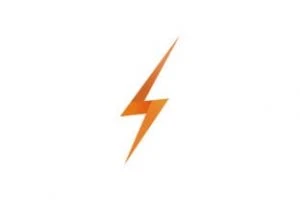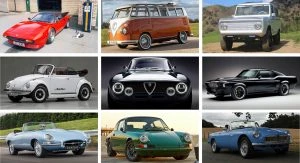ICE to EV Conversions

Converting your favourite drive over to electricity seems like a reasonable alternative to buying a brand new EV with a massive price ticket now, doesn’t it? Flicking through the list of brand new EVs that you can currently buy in Australia soon has you eyeing up figures of well over $50 k. At the moment, the cheapest EV in Australia is the MG ZS EV with its $45k price tag. A bog standard Nissan LEAF comes with a drive away price of around $54k. How about a Tesla? Anywhere from $65–93k will get you into a Model 3. Converting an older classic car to full battery-electric power has coolness written all over it. The end result might even gain you a Greta Thunberg award!
Is it possible? Can we convert a favourite oil burner to electric power? If I was to convert my drive to EV, it would have to be a conversion of a favourite car – something like an old Falcon or Commodore. Bringing one of these ideal cruisers up to EV spec would be a challenge, but a challenge with great satisfaction. Installing an electric drivetrain into an old vehicle could help keep some classics on the road and out of the scrapyard. Why not take the restoration, recycling and retrofitting to the next level and repower classic cars?
There have already been a few conversions of this sort of thing in certain areas around the globe, usually in someone’s garage late at night, where the candle burns bright and long into the night. Considering performance enhancements alone, a good off-the-shelf electric drive system will almost always be a substantial performance upgrade for an old daily driver. Even some of the muscle car straight six or V8 powerplants are humbled by a rather conventional EV motor with its instant torque availability.
Converting a petrol or diesel car into an electric one means replacing its combustion engine and fuel system with an electric motor coupled with a traction battery. Although the procedure looks relatively straightforward at first glance, it does mean that you do need to apply sound physics and DIY know-how on electrics to get yourself a car that moves in the right direction safely. There is some pretty high voltage happening beneath the skin of your old, converted classic that enables it to whistle up to 100 km/h in seven seconds, or less. Conversions are a substantial cost and do require appropriate re-certification tickets. However, the whole ordeal should cost quite a lot less than a new EV, at least by a few thousand when compared to a Tesla.
Things to work through.
Installing an electric motor into a gas or diesel car’s chassis and platform requires the skill to build up a drive train and axle to get the power from the electric motor out onto the road. The old gearbox that was essential to the old internal combustion engine (ICE) design is a useless mechanism for the new electric motor. The old gearbox has to go, and a new drive mechanism has to be designed and implemented.
The weight of the vehicle and the dimensions of the wheels directly impact on the choice of brakes and suspension. Not always but, more often than not, the car with a heavy battery pack will weigh more than the original set up. In order to function safely with the added weight and/or changes in weight distribution, the converted car must have some structural strengthening, brake and suspension upgrades and some modifications done in order to ensure that the changes marry up into a harmonious mode of EV transportation and driving pleasure.
The battery pack isn’t going to be cheap. You’ll easily spend in excess of $10–15k for a lithium-ion battery pack that is able to offer a respectable range over 100 km. Lead-acid batteries, like those used in golf carts, can often be installed, though they typically deliver a rather small operating range on one charge. Lithium cells are smaller and lighter, and can enable longer ranges, but they’re more expensive. How many batteries you’ll require will depend on the vehicle you’ve chosen and the space available in which to have them fitted. The new battery pack, as mentioned above, is very heavy and has to be carefully installed inside the car’s framework in a way that won’t compromise occupant space and safety, as well as ensuring excellent on-road behaviour.
One other small thing to think about is how you will heat or cool the cabin. ICE vehicles used the heat that comes from the engine design, but EVs need to run a different set up.
EV enthusiasts usually favour smaller and lighter vehicles for conversion, though the size of your wallet will also control what you can and can’t afford.

ICE to EV Conversions
Popular choices of cars that have been converted have been cars like the Honda Civic, VW Beetles, the Fiat 124 Spider, the Triumph Spitfire and MGs of the same era, Mazda Miatas or MX-5s, Toyota MR2s, and various Porsches. Pickup trucks and utes are also easy converters because they already have a big tray out the back to accommodate heavy batteries.
Mat Coates from Nelson, NZ, saw the potential of electric cars as a youngster who messed around with remote-controlled vehicles at age 10. His first conversion was a Mitsubishi GTO, so there’s an inspiration for you. How hard can it really be? All things considered, where there’s a will there’s a way. As long as you tick all the boxes and do the job right first time and do it well. A quiet classic that has been converted to EV propulsion is hard to beat and a rather special way of getting around.
A good place to start might also be to talk to the people at https://www.evolutionaustralia.com.au. These people already have experience in converting ICE vehicles over to being an EV.